I recently came across an article that claimed that English visual novel had reached a peak since mid 2017 and were now entering a new era, thanks to increasing popularity and developers eager to push the boundaries of the medium. Well, I hate to be that person but as someone who has been in the community long enough to remember its short history, I have to say that this couldn’t possibly be farther from the truth. Let me take you a few years back and I think you’ll understand!

Always Remember Me, by Winter Wolves (2011). See, VNs didn’t wait until 2018 to look nice~
The very humble beginnings
You can find traces of the first few English Visual Novel (or EVN for short) back in the early 2000’s where they slowly attracted creators excited to try out this new medium. Around 2007-2008 is when most of the current veterans actually started : names like Winter Wolves, Hanako Games, Christine Love or Sakevisual, who all ended up managing their own companies. And from then on, visual novel kept growing more and more, with the Lemmasoft forums (the historical place for creators to hang out) getting bigger as well. 2011 was an especially good year for that time but it’s in 2012 that it truly exploded.
2012, the turnaround year
By all metrics 2012 is probably the pivotal year for English visual novel. It notably gave us several extremely influential games that I’m sure you’ve heard of.
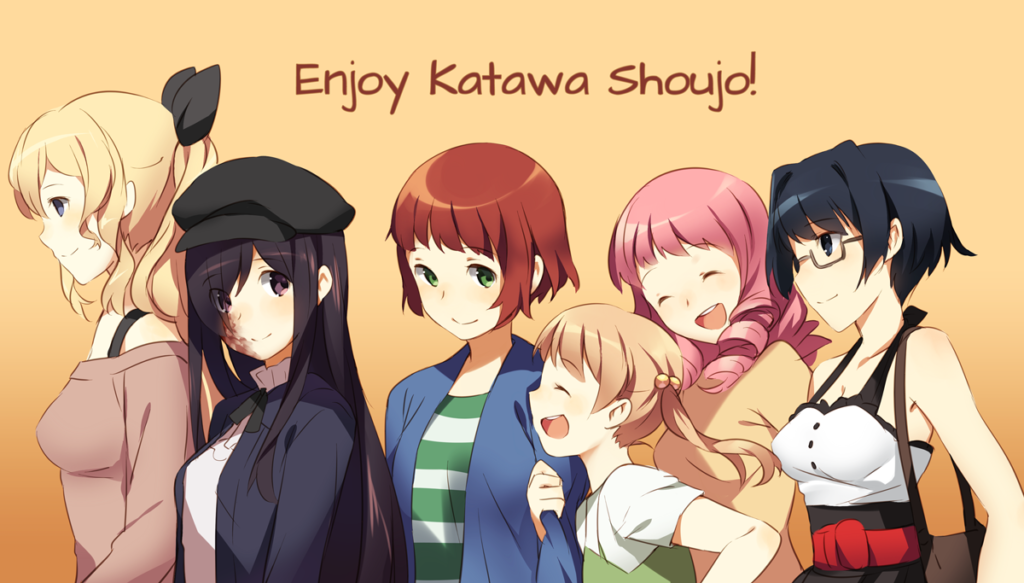
Katawa Shoujo got released in January. It was one of the biggest hobbyist project of the time, both in terms of length and ambitions, and became a beloved classic despite (or maybe because) of its many flaws. It inspired a brand new generation to make their own visual novel, what we later called the « katawa shoujo generals » trend. Until 2017, Katawa Shoujo was probably the most popular EVN of all times in a specific part of the community.
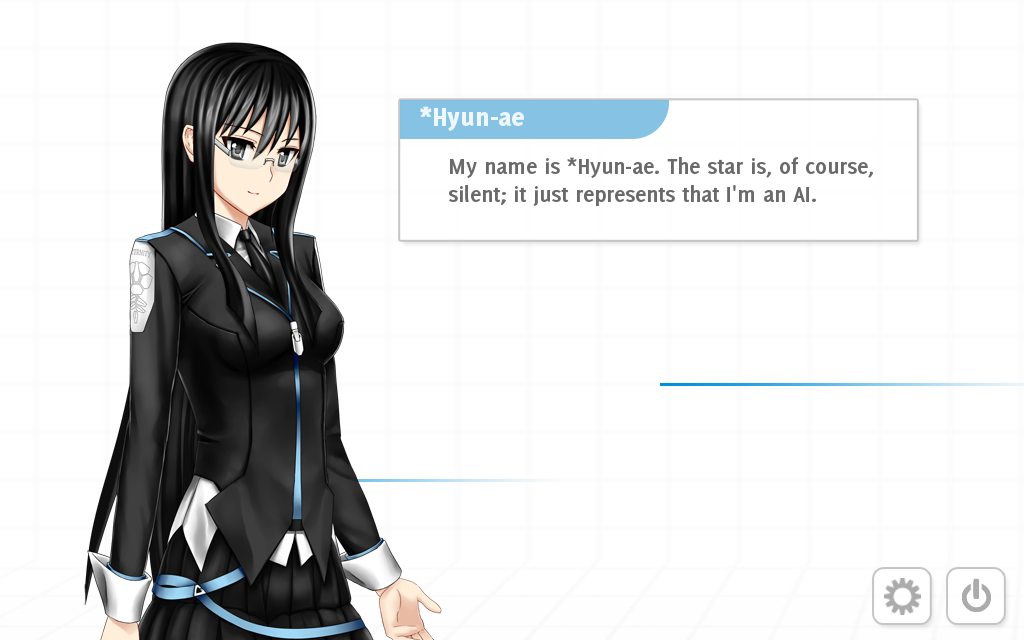
Analogue: A Hate Story, the commercial debut of Christine Love became the first visual novel ever to be released on Steam and attracted a lot of attention for its political themes, proving that the medium could be suited for all sorts of stories. Christine Love also became a figurehead and one of the few to manage to transcend the community by attending huge conventions and answering interviews from major press outlets. You could even say that she’s the closest we ever got to an EVN star.
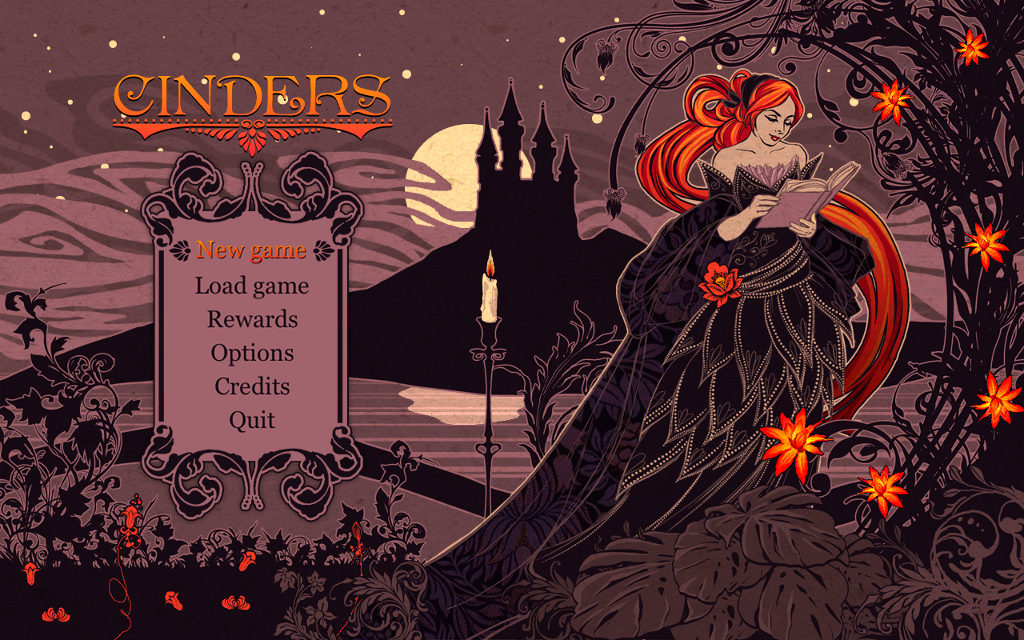
Moacube managed to take things a step further with Cinders. One of the very interesting things about Moacube is that it’s a team made of Polish veterans from the game industry who chose to make visual novel, which in itself is quite the compliment. And Cinders is everything we needed: the artstyle is absolutely gorgeous yet completely different from the usual anime style, proving that visual novel don’t always have to look that way. It also strongly relies on its story and an amazing amount of choices, which is still rare to this day. And just like Christine Love, Moacube injected some progressism in a medium traditionally seen as conservative.
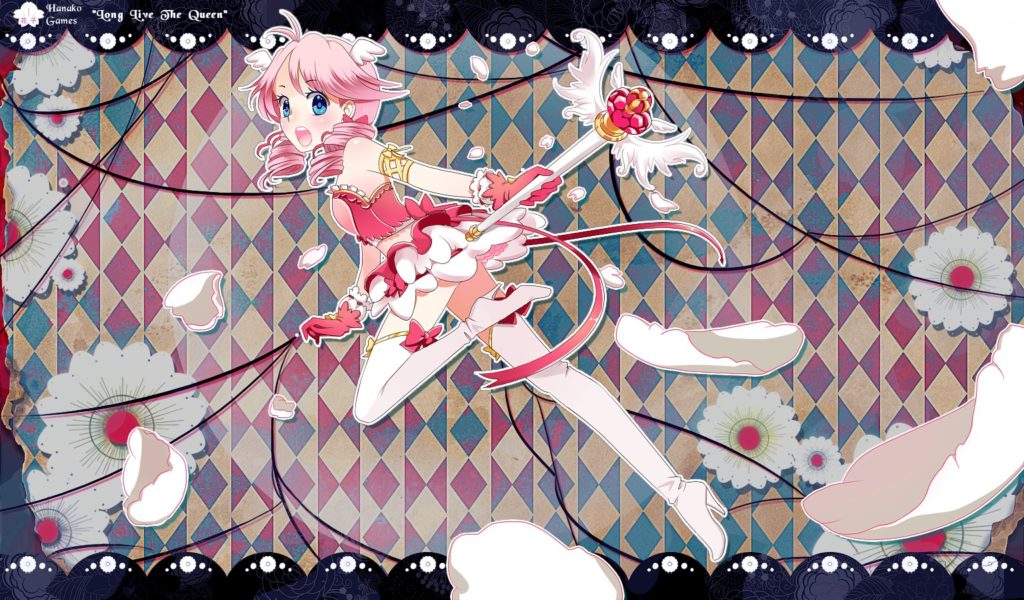
Long Live the Queen, by Hanako Games (2012)
The VN community itself was thriving as it was one of the best year for the veterans I mentioned: Hanako Games received critical and commercial acclaim with Long Live the Queen and Winter Wolves produced their most popular game yet with Loren the Amazon Princess. Lemmasoft became an especially active place and their dedicated game jam (called Nanoreno) attracted many new developers like Cyanide Tea or Dischan who rapidly gained a name for themselves. Similarly several of the regulars there started to consider going commercial.
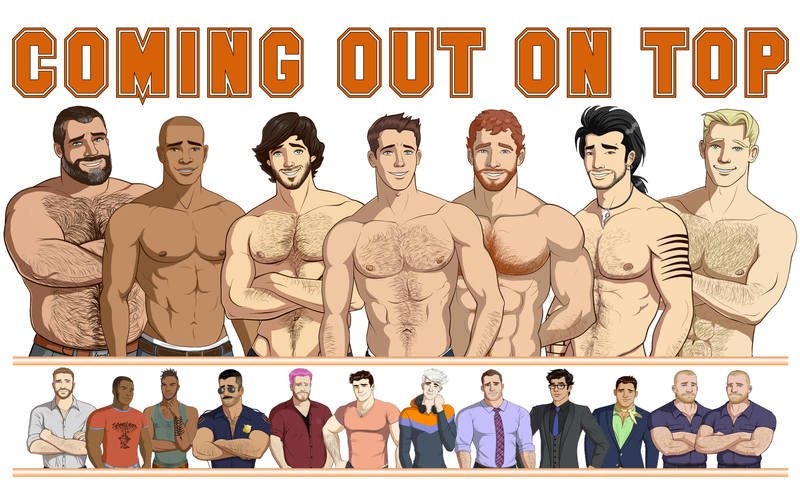
If the earthquake wasn’t big enough, it’s also at the end of this year that Obscura, one of those regular, launched Coming Out on Top on Kickstarter with massive success: the campaign obtained 772% of the original goal and paved the way for future projects to come on the platform. Which hold even more meaning considering that Coming Out on Top was also a gay dating sim, something of a rarity at that time.
And with Greenlight’s creation in 2013, the most popular visual novel started to appear on Steam.
2014-2015: Rise and Fall
If 2012 was a pivotal year in many regards, it didn’t end there either as the medium moved up a notch for better or for worse, in no small parts thanks to the arrival of a new publisher: the Sekai Project.
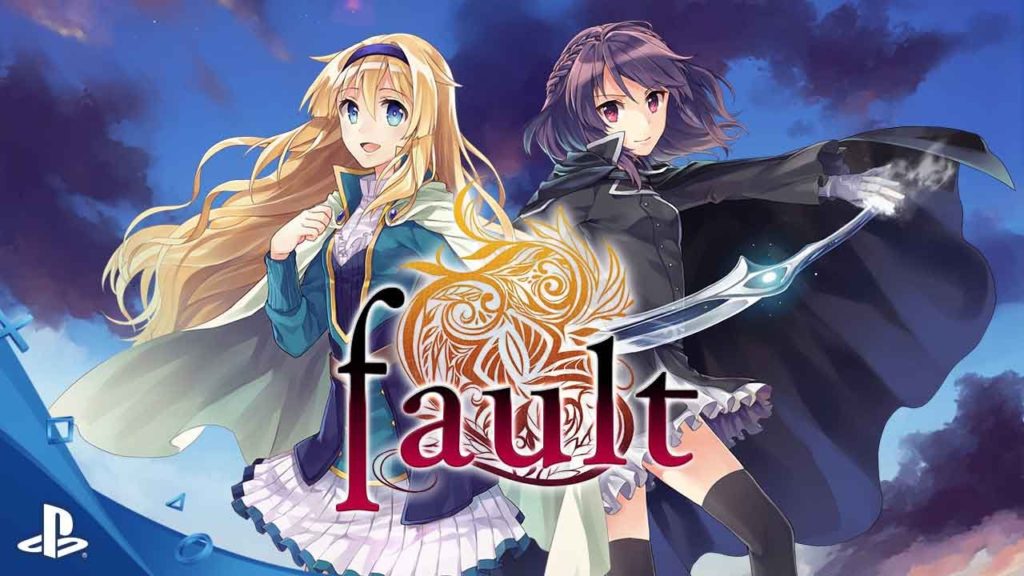
What’s so peculiar about them is that they promulgated a new style by using crowdfunding a lot during the Kickstarter boom to promote Japanese visual novel and rather varied ones at that. Historical publishers like JAST USA or Mangagamer were mostly doing erotic games and requested safe licences whereas the first projects by Sekai Project had more of an indie flair on top of being all ages. Those were World End Economica, a trilogy about economics by the author of Spice and Wolf, and fault milestone one, a fantasy series with a presention that strives towards cinematic with each episode.
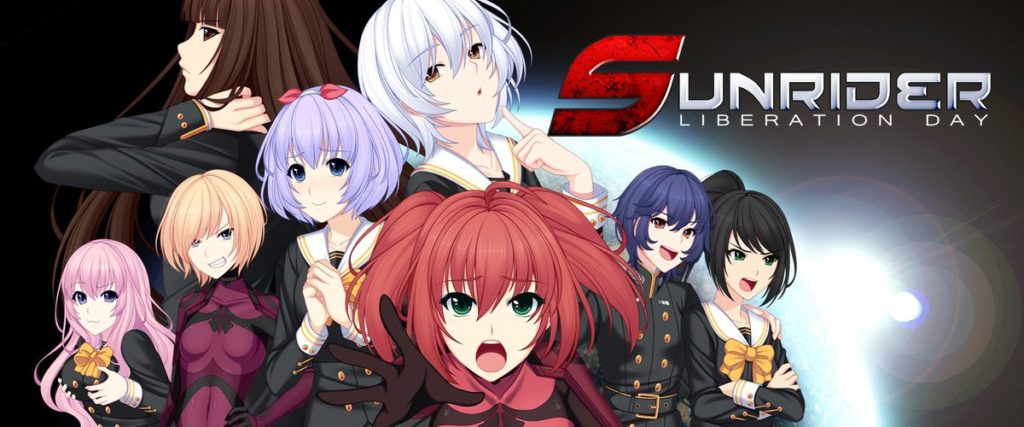
Another avant-garde move was to become the first publisher to make extensive partnerships with English visual novel. There had been some in the past, of course, but those were rather limited due to the fact many game publishers wouldn’t touch the genre at all while visual novel publishers were specialized in adult titles and couldn’t reach major press outlets because of that. But with a more diversified catalog, Sekai Project managed to dive into a more mainstream audience. Their first partnerships all became important players in the community as well:
- * Love in Space had tremendous success at that time with Sunrider‘s Kickstarter campaign gaining 1467% of their original goal and established their own fanbase.
- * Lupiesoft, though they cut tie with Sekai rather quickly, became figureheads in western erotic games, which as a niche was still rarely explored and certainly not very tastefully.
- * And a little later the very prolific ebi-hime gained traction as well, becoming one of the few to be known as a visual novel writer first and foremost. Which might sound weird for a medium based on text but is still an issue today.
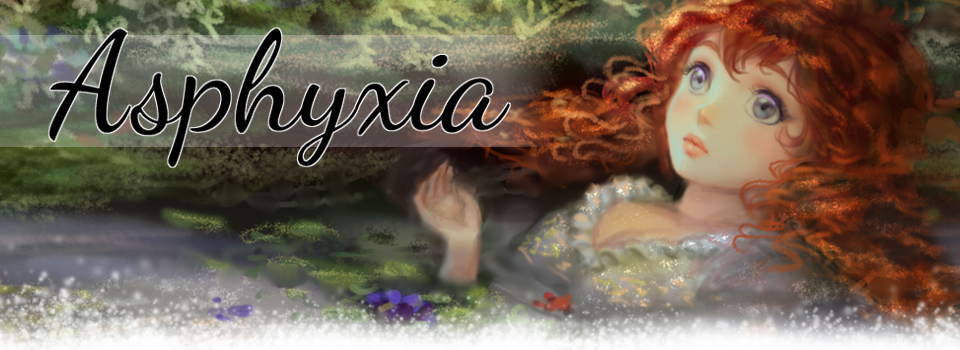
Asphyxia, ebi-hime’s top seller (2015). I admire the fact that she’s not afraid to regularly experiment with her projects.
In the meantime, the historical VN publishers were also having a moment with more and more Japanese famous licences being translated into English. And with Greenlight becoming less strict over time, more and more games were rushing to get released on Steam, Japanese and English visual novel alike.
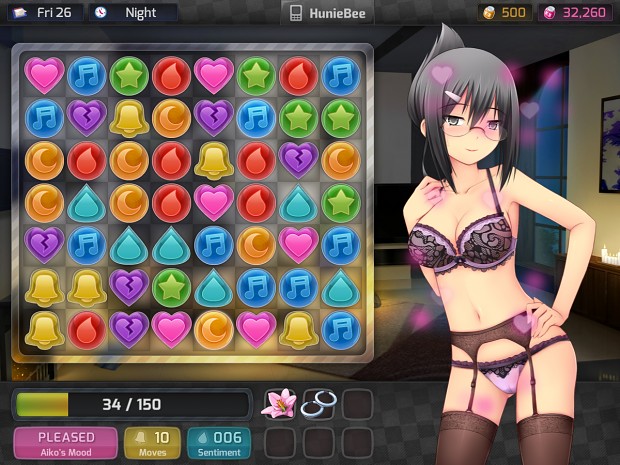
Huniepop (2015)
Sadly, it’s also at that time that the first less encouraging signs started to appear as the most successful projects of the period are all full of the tasteless fanservice visual novel had been rejected for by a wider audience. There’s the NEKOPARA series which became famous for its beautiful artstyle…and its steamy sex scenes, Huniepop that became extremely popular for its mix of match 3 gameplay and dating sim elements (including sex scenes) and the now infamous Sakura series by Winged Cloud that started as bland sexy ‘teasing’ before adding sex-scenes as well. It might not seem much individually but together all those games helped reinforcing the stereotype of the genre being basically mindless porn for straight men, slowly overshadowing the more creative part of the community.
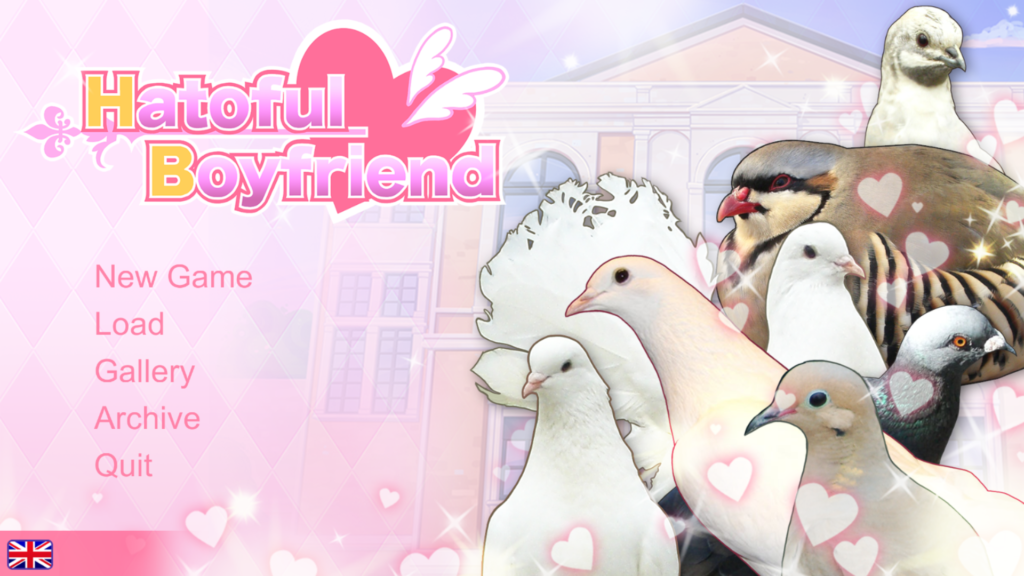
Yet 2014-2015 was not just about fanservice: Hatoful Boyfriend got picked up by Devolver Digital and caused unexpected enthusiasm. The silly premise (you’re dating birds) managed to win over a more mainstream audience while proving that it had more to offer than that. Despite itself, Hatoful Boyfriend also started a new trend of hobbyist gimmicky/satirical dating sim based on the most unlikely things possible. While fun for the most part, those tended to forget the deeper story the original had going for itself.
2015-Now : The invisible decline
So to me, 2012-2015 is what you could consider the peak of the genre: it’s when most of the influencial games got released, when most of the critical acclaim happened, when visual novel were the most profitable and when the future seemed the brightest. Unfortunately 2015 is also the beginning of the end because, since then, things have changed drastically for the exact same reasons visual novel started becoming more popular in the first place.
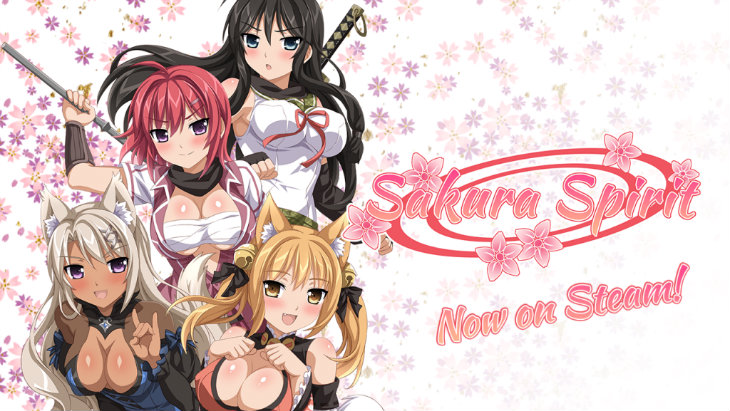
Sakura Spirit, by Winged Cloud (2014). The one that started it all…
In the game industry at large, a lot of developers are talking about something called the indiepocalypse and while it’s still a controversial subject, there is no denying that the landscape since 2015 is overall harsher and less forgiving. Since Steam’s doors gradually ended up being wide open, an uninterrupted flood of new games are published every day and it’s extremely hard to get noticed. And of course visual novel have not been spared by the over-saturation of the market, Japanese and English ones alike.
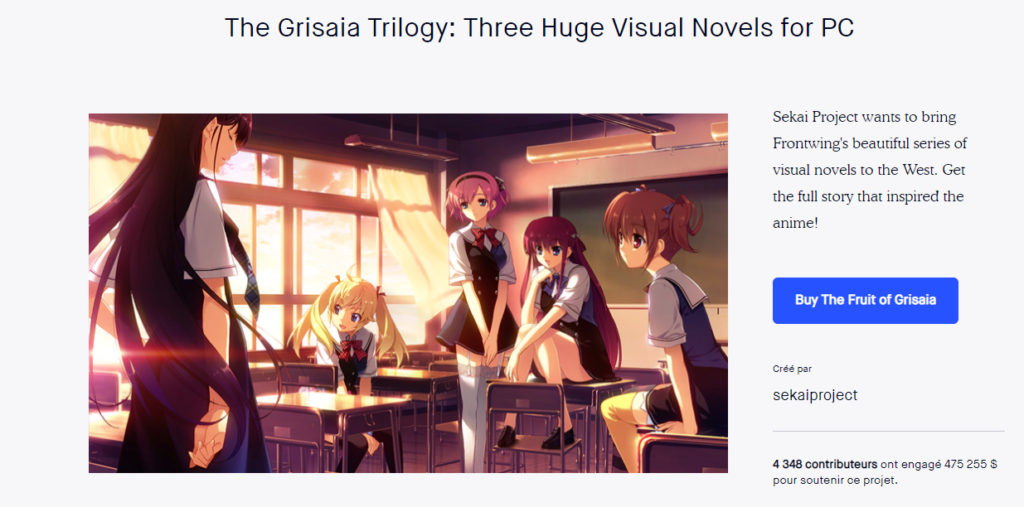
One example of the many SP campaigns that ended on a sour note for the backers.
The Sekai Project who started the trend has now lost most of the trust of their consumers by abusing crowdfunding and not delivering on their many promises, on top of a jarring lack of transparency. Despite being swamped with unreleased licences, the publisher still keeps announcing new ones to the point that it’s impossible to remember them all. And given the latest news of them laying off their physical staff and their current track record, it is highly rumored that they’re financially struggling.
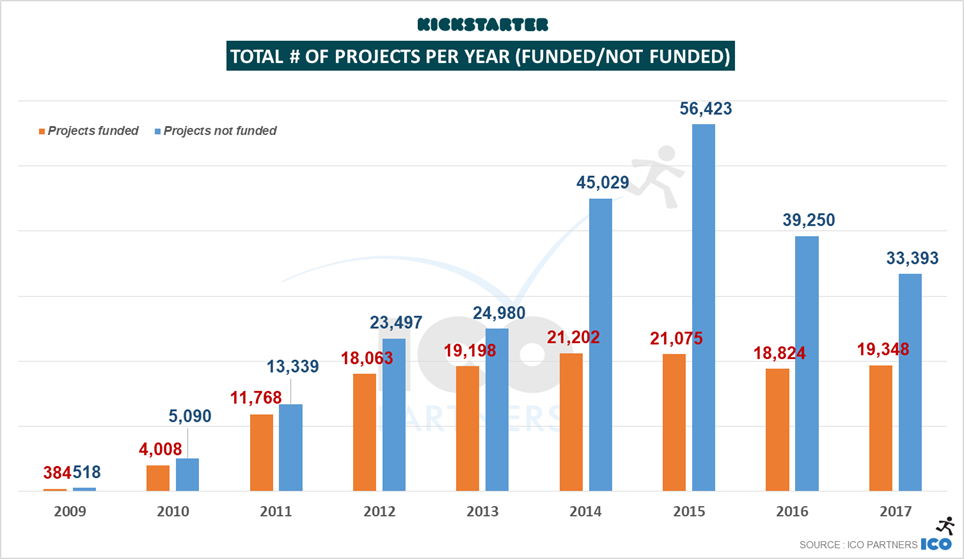
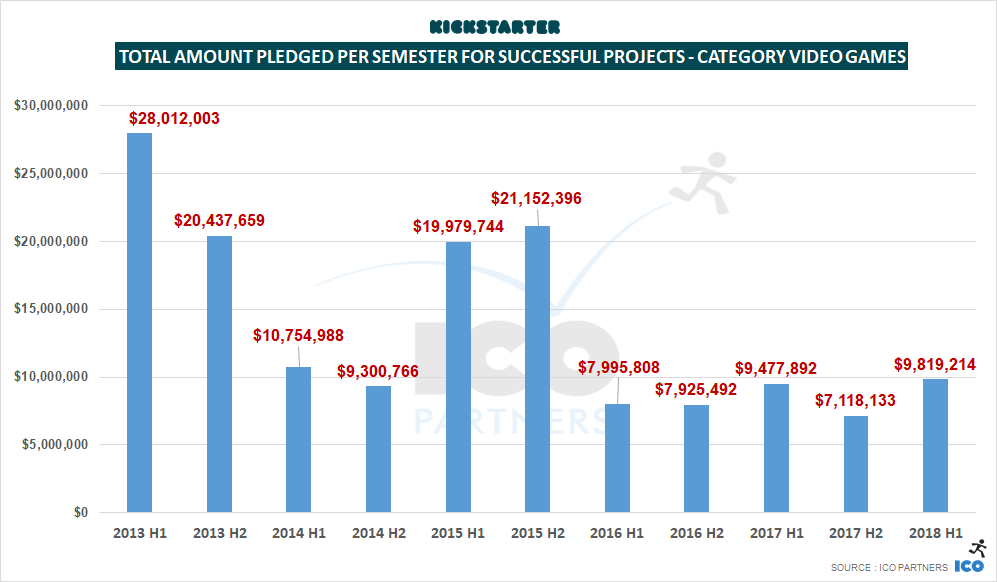
Some necessary statistics to put things into context. Check out Ico Partners’ website for more!
Kickstarter itself has fallen from grace over years. With several catastrophic failures and a number of games coming out not quite as expected, customers are less willing to put their trust in new projects and the hype has sharply faded. This has direct consequences on the visual novel market: since those are niche products, developers have more and more difficulty funding them properly. From experience, the average a modest EVN can ask for went from 5-10k to 2-4k in a mere years. Which is a shame as it’s often the only method small creators have at their disposition to obtain funds and visibility.
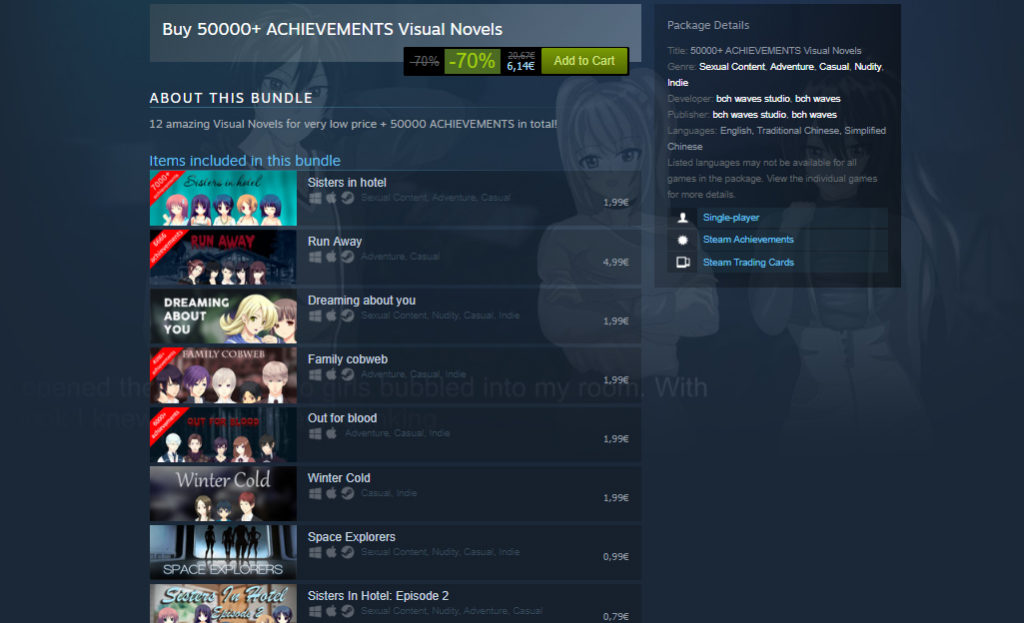
50 000 achievements for a crust of bread? Lucky you… Oh yeah, and there’s also games but who cares about those?
Meanwhile, fraudulent practices are becoming increasingly common on Steam, mirroring the trend of « assets flips » in the general game industry. Applied to VN, those take the form of dirty cheap and short products made of stolen art and THOUSANDS of achievements as a way to both bait customers and shut off complains. There are also machine-translated Japanese visual novel that barely work and shady practices such as turning said VN into raffle tickets to win unrelated prizes (such as a PS4), most of which can be directly imputed to newcomer Chinese publisher SakuraGame. Sexual games don’t have it any better as the market has been flooded with low quality Hunipop clones, some of which arrive on Steam barely censored like Mirror, the highest selling game of SakuraGame, which is somehow allowed to include sex-scenes with rather extreme content almost as is.
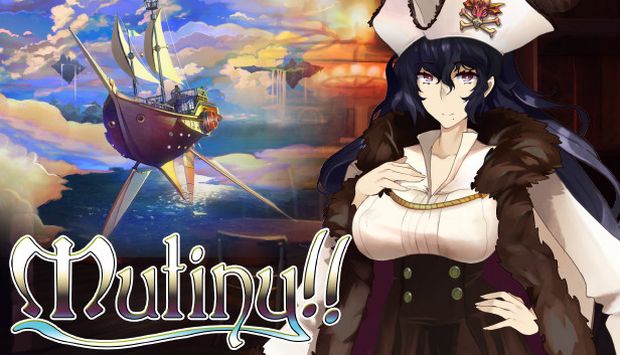
Mutiny!! by Lupiesoft (2017) was one of the adult games at the heart of Valve’s initial threat of removal
And yet, the greatest paradox is that Valve keeps going back and forth between allowing some light mature content on Steam and prohibiting it entirely, while providing no clear guideline developers could follow. At some point, 18+ patches were allowed as long as the core game was properly censored on Steam but advertizing them was forbidden. But then a wave of mature EVN found themselves being targeted by a conservative groupuscule and the creators were threatened to have their game removed from Steam entirely. It caused quite a stir in the community until Valve finally spoke up to ensure that ‘all’ games were welcome on the platform…before privately bringing to a halt the release of several upcoming visual novel. As for now, there are still no clear guidelines nor the features promised and developers are kept in the dark, some in a compromising financial position. Speaking of a bias against the genre could be hasty but this is nonetheless the impression many get from this weird treatment only visual novel seem to receive.
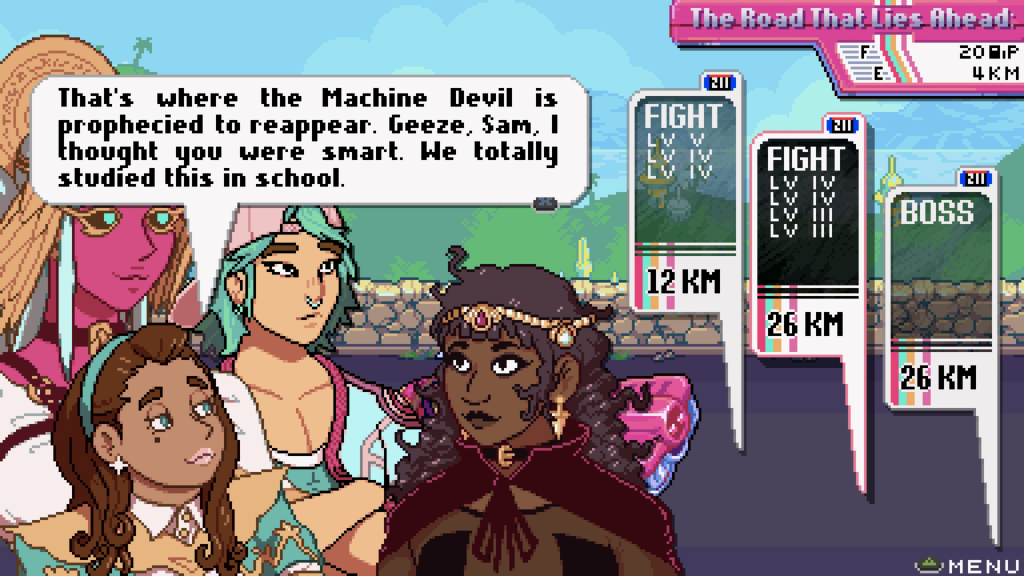
Get in the Car, Loser! (TBA) Not very visual novel-like, is it?
On the other side of the scale, some of the very same developers who helped popularizing visual novel back in 2012 have already made public their decision to distance themselves from the medium. It’s the case for Christine Love who stated that Ladykiller in a Bind, a mature visual novel released in 2016 (which ended up getting her her first IGF award), would be her last. She has since then moved on to her next project, Get in the Car, Loser!, a RPG with pixel art. Similarly, despite releasing Solstice in 2015, Moacube is discreetly leaving the genre to focus on more traditional games, cancelling a potential Cinders sequel in the process. It should come as no surprise that both games, though positively received, didn’t earn nearly as much as their previous projects.
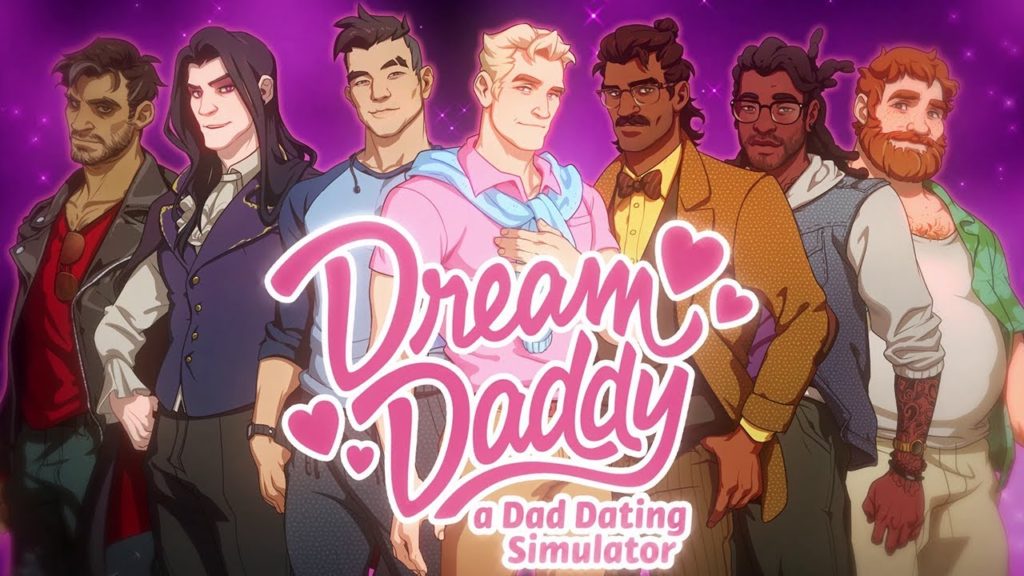
In this rather bleak atmosphere, the only visual novels that truly manage to capture some maintream success seem to heavily rely on the same gimmick Hatoful Boyfriend inadvertently generalized and a lot of viral marketing. One of the best examples would be Dream Daddy, one of the two true popular successes of 2017, which offers you to play a dad and date other dads. While the subject is adressed tastefully and is a welcome touch, there is no denying that the humor and marketing (urging people to create their own « dadsona ») do play into the gimmicks and memes the internet love so much.

The Super Patriotic Dating Simulator a.k.a. Fuck ISIS
I unfortunately cannot say the same think about the bewildering Super Patriotic Dating Similator currently on Kickstarter. The game’s synopsis sounds incredibly tasteless and cynical as you’re supposed to follow a teenager spy who infiltrate ISIS to date hot terrorist guys. Though this dating sim is not funded yet and might not even be, I’m bringing it up to make a point: nowadays visual novel are constantly expected to be satires of themselves.
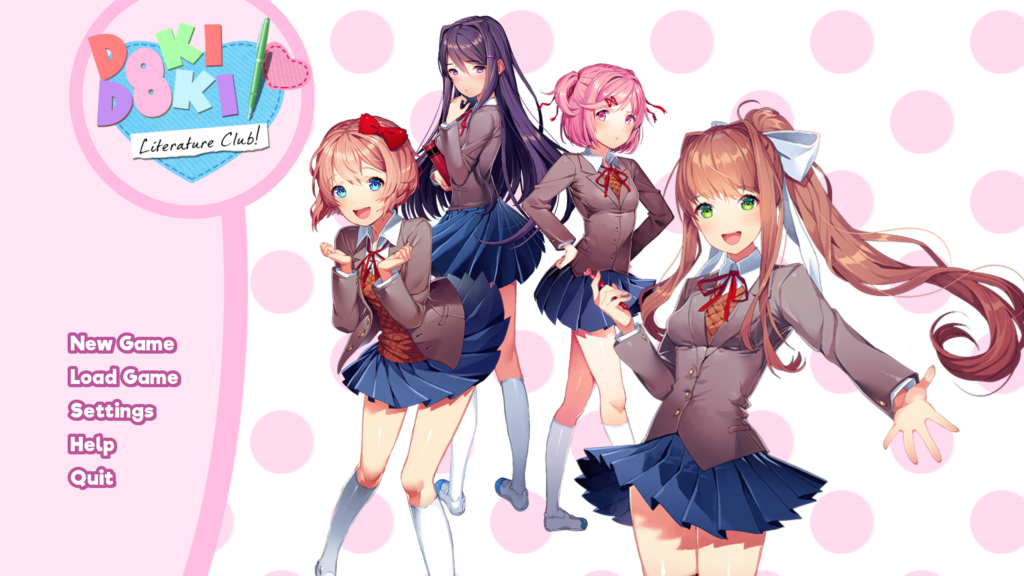
And no other product could demonstrate it better than Doki Doki Literature Club, the viral sensation that took the internet by storm in 2017. While it looks like a fairly standard story at first, the cute part turns out to be a front (and not a very subtle one at that), revealing a rather shallow horror game with meta elements. It quickly became THE game of the summer and the most popular VN EVER with streamers and youtubers trying it out to scare themselves and their audience. While its success proves that the genre’s codes are mostly integrated by a wider audience, DDLC is quite explicitely a visual novel for people who don’t really like visual novel, which is probably why I find it so ironic and demotivating to see it grab the number one spot.
Where do we go from there?
This doesn’t mean that good visual novel are not coming out nor that critical acclaim has become impossible. In the same period, we got the mega successful cyberpunk bartending action VA-11 HALL-A, the short but sweet One Night Stand whose dev quickly rose to fame (even becoming a finalist for the same IGF award Christine Love won), and A Normal Lost Phone on the more « interactive fiction » side of the genre. Similarly, hobbyists never go away and will likely continue making more personal and quirky games. But it’s hard not to feel that commercial products are looking more and more the same by the year. Making a commercial visual novel in 2018 is riskier than ever, which is likely to drive away the creators who have a unique vision that doesn’t translate well into viral marketing. Which is an immense shame.
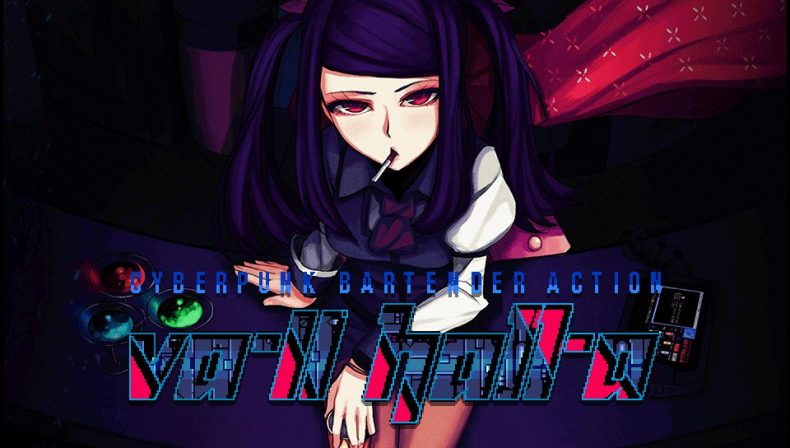
That’s why I wanted to make this article as I believe the one I read could be harmful to newcomers. I used to believe around 2012 that visual novel had a bright future because I thought and I still think that the genre is full of potential (I wouldn’t be making Chronotopia otherwise). But things have changed since then: EVN developers have it tough to survive and are fearful to take risks, which means that the medium is stagnating creatively. Some commercial games still become hits as there will always be winners regardless of the context but you shouldn’t let them fool you into believing that the road is going to be easy.
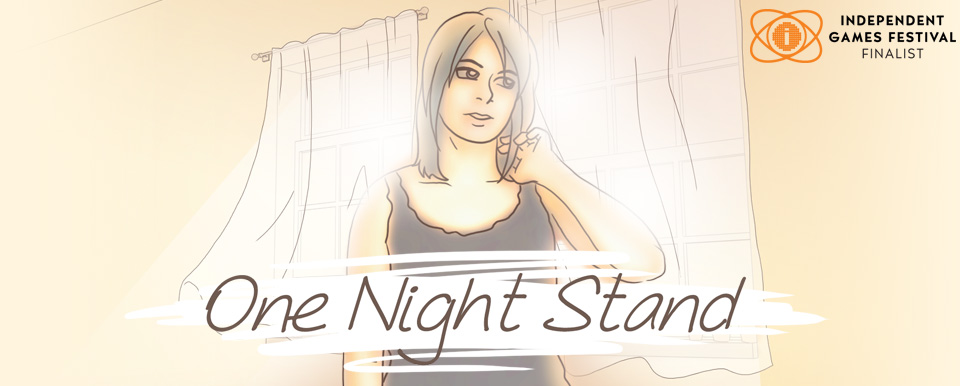
We need new voices, we need diversity, we desperately need what you might bring the community to grow so don’t let it dishearten you. Just don’t expect tremendous commercial success.

P.S: If you like dark and mature story-driven visual novel, Chronotopia: Second Skin is on Kickstarter at the moment so consider supporting us~

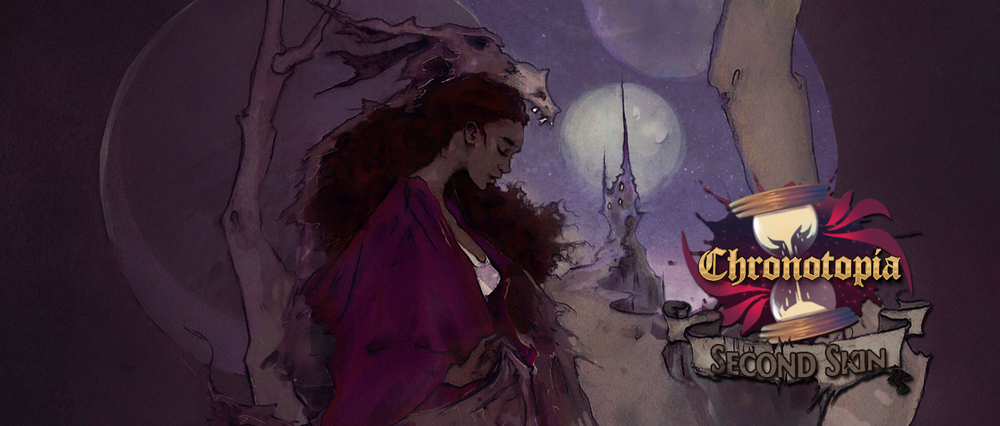
I think your assestment on how visual novels are expected to be satires of themselves is very interesting. I think it is about the Japanese influence on the genre and Western audience sees works that has both cute characters and positive themes as “childish”. I think adult oriented animations like South Park or even lesser-known stuff Happy Tree Friends use their cute artwork for contrasting effects. This causes us to think that any drawing with cute characters are childish, since South Park is being ironic by using cute and simple drawings.
Also, since Japanese works uses much different tropes than Western works, it is more obvious for the Western viewer to notice these tropes and parody them. I wouldn’t put Hunie Pop in the Visual novel category but they did a great job in making very Westernized characters (compare that to Ecchi Sketch for example). Besides the fairy, it isn’t really a satire, just Western archtypes in a dating sim environment (except for the cat which looked very out of place).
Also, there is a great deal of meta humor in indie games, regardless of genre. That might be a factor too.
Thank you =). To be honest, I wasn’t really able to put my finger on exactly why visual novel were expected to be that way (satirical) by a Western audience but I think you’re making very good points!
I’ve noticed countless times with my own games that players assumed cute art meant cute story without even bothering to check the description…to their greatest horror when they found out it was not the case at all. Which is weird because I’ve come to automatically associate cute art with dark plot as a contrasting effect. It seems like we still have a long way to go before the anime aesthetic is allowed to be just one aesthetic among others…
Huniepop is indeed not really a visual novel but it paradoxically had such an impact on the visual novel community & market that I couldn’t not mention it!
I really liked this article. I think it’s quite true in that the risk is higher than ever. I’ve seen my exposure get lower and lower with every game I release and not through lack of effort. I’ve had to slash budgets, which obviously has a lasting effect on the game itself.
I have to admit, I’m considering a genre move, myself.
Oh, and Ozzy – Ecchi Sketch wasn’t trying to westernize it’s characters! it’s set in Japan! Source: Me!
Thank you~
In many ways, as several people have highlighted, the situation is coming back to what it was before Steam opened its doors with Greenlight. The landscape is harsh and unforgiving so devs have to be really resistant to make a living and not everyone can do that…
Good luck to you if you ever decide on that genre move!
Tere are dstilkl devoted devs though. There are plenty great visual novel games around among all the trash. Fortunately. I don;t care for the shallow fanservice sex driven frauds. The can’t kill real stories. But I AM so tired of all the cash grab TRASH
Great read, you;vce made som excellent observation about the practices of te portal but i want GOOD games. I want to find them so please bring them out!
Pingback: Entretien avec Helia – Fondatrice de Träumendes Mädchen – Fiction-interactive.fr